Edited Volumes by Karin Reichenbach
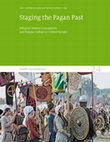
The allure of the Pagan past—the prehistoric and early medieval eras before Christianisation—perv... more The allure of the Pagan past—the prehistoric and early medieval eras before Christianisation—pervades modern media, from fantasy novels and video games to Viking TV series and comics about ancient heroes. This volume explores the deeper, more political currents running through the popular fascination with these distant times. Focusing on three key areas—historical reenactment, ethnic Neopaganism, and the metal music scene—the book examines how these fields not only entertain but also serve as powerful vehicles for political ideologies.
The collected essays explore how these “popular Pagans” create romanticised images of pre-Christian societies, idealising their perceived naturalness, ethnic purity, and martial heroism. Drawing on ethnicist thinking, ancestral identification and nostalgia for an unadulterated past, these portrayals often disregard current scholarly discourse. Instead, they perpetuate outdated narratives, that are more in line with far-right ideals, fostering exclusionary beliefs and anti-democratic rhetoric. Based on research discussions initiated at the Leibniz Institute for the History and Culture of Eastern Europe, this volume is the first to shed light on the political role of the Pagan past in contemporary Germany, Poland and Hungary.
Burgwallforschung im akademischen und öffentlichen Diskurs des 20. Jahrhunderts, 2009
Papers by Karin Reichenbach
EAZ – Ethnographisch-Archaeologische Zeitschrift
Einleitung zum Hauptthema dieser Ausgabe.
Bericht der Römisch-Germanischen Kommission 100, 2019, 2022
Gerhard Bersu’s excavations at Lower Silesian fortifications and his relations to Silesian prehis... more Gerhard Bersu’s excavations at Lower Silesian fortifications and his relations to Silesian prehistoric research are scarcely known so far. Yet, they influenced him as much as his early archaeological work in southern Germany and the Mark Brandenburg and formed the basis for his dissertation and two of his most important publications. The consequences of this research, however, proved also problematic for his Lower Silesian colleagues and their efforts in archaeological monument preservation since Bersu failed to provide excavation reports to document work and results.

Reenactment Case Studies Global Perspectives on Experiential History. Edited By Vanessa Agnew, Juliane Tomann, Sabine Stach, Nov 2, 2023
Following on from current debates about historical reenactment linked to right-wing extremism, th... more Following on from current debates about historical reenactment linked to right-wing extremism, the German reenactment group Ulfhednar is analyzed as an example of how strongly archaeologically inspired historical reenactment can be interwoven with branches of the subcultural fields of black/pagan metal and neopaganism showing politically extreme right-wing thought patterns. Asking how these respective fields may influence each other, the chapter shows how history reenactment of, e.g., the Germanic or Viking period can be based on accurate reconstructions/replicas of genuine archaeological finds while likewise perpetuating narratives of 19th/early 20th-century neopagan romanticism and völkisch ideas. Clearly detached from current academic discourse about the complexity of ancient societies an ancestral understanding of Germanic and Aryan ethnicity is revived that had provided the alleged historical essence for racist ideologies and politics in the early 20th century. Connecting historical reenactment with the historicizing (sub)cultures of modern ethnic paganism and the black/pagan metal music scene can powerfully link performative and sensually experienceable ways of history appropriations with extremist political agendas. Since open-air museums and similar forms of archaeological heritage maintenance frequently serve as scenery for reenactment performances they might add officially warranted credibility to such politically distorted conceptions of the past raising the question if reenactment practices could even function as an enforcement of politically constructed narratives of the past.
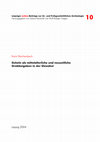
Die Arbeit beschäftigt sich mit einem besonders aus dem mittleren Donauraum bekannten frühmittela... more Die Arbeit beschäftigt sich mit einem besonders aus dem mittleren Donauraum bekannten frühmittelalterlichen bis neuzeitlichen Bestattungsbrauch, bei dem Sicheln als Grabbeigaben verwendet worden sind. Dafür wurden exemplarisch alle publizierten Gräber mit Sicheln aus der Slowakei untersucht und Zusammenhänge mit dem Sozialstatus der Bestatteten herausgearbeitet sowie allmähliche Veränderungen dieser Beigabensitte seit dem hohen Mittelalter festgestellt.This work is dealing with a burial rite using sickles as grave goods, which occured particularly in the middle Danube region from early medieval up to early modern times. A systematic analysis including all published graves containing sickles from the area of today Slovakia led to an interesting relation to the social status of the buried persons and further results concerning chronological changes of this phenomena.Práca sa zaoberá s kosákmi ako časť hrobového inventáru v stredoveku (Obr. 8). Doterajšie bádania navrhovali rozdielne i...

Gräber und Grabfunde geben Einblick in eine wichtige Grenzsituation menschlicher Gemeinschaften d... more Gräber und Grabfunde geben Einblick in eine wichtige Grenzsituation menschlicher Gemeinschaften die Grenze zwischen Leben und Tod. Grabriten stehen, da sie den Toten in die jenseitige Welt geleiten, genau an dieser Schwelle zwischen Leben und Tod. Der vorliegende Beitrag ist eine Zusammenfassung der Ergebnisse einer Magisterarbeit, die an der Universität Leipzig mit Unterstützung des Lehrstuhls für Archäologie in Bratislava und dem Archäologischen Institut der Slowakischen Akademie der Wissenschaften entstand. Diese Arbeit beschäftigte sich mit einer bestimmten Gruppe von Grabbeigaben den Si cheln. Ziel war es, durch eine systematische Untersuchung der Gräber, in denen Sicheln liegen, Aufschlüsse über die Bedeutung dieses Bestattungsbrauches zu gewinnen. Die Interpretationsvorschläge der bisherigen Forschungen lassen sich in drei Gruppen zusammenfassen: Zunächst wurde besonders in der älteren Forschung eine Deutung der Sichel als Waffe oder Bestandteil von Kriegerund Reiterausrüstu...

Berichte zur Wissenschaftsgeschichte/History of Science and Humanities 44(4), 2021
What sounds like a laborious set up for a shallow joke actually hits the core of the problem this... more What sounds like a laborious set up for a shallow joke actually hits the core of the problem this issue covers: What do the leading archaeologist of the former German Democratic Republic in re-unifying Germany, Bulgarian scientists in the late 1960s and some recent discussions about representations of Polish ancient history have in common? They all operate along fractures in the crust of scientific authority, they mark moments in time when classical figures of knowledge reach or breach authoritative status. They serve to study how authoritative speech bridged and manifested these relations and help identify areas where scientific authority is contested. This volume transcends this topological rhetoric with a praxeological take on scientific authority. Concentrating on authority figures, it brings specific margins and contestations into sight. The papers in this volume study cases from former socialist countries of Central, Eastern, and Southeastern Europe, and thus examples that present us with the complexity of agonal relations within state socialism and post-socialist transformations that complicate matters of scientific authority in many ways, yet also offer illustrative examples of shifting constellations of (scientific) authority.
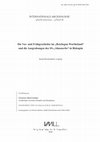
Grenzen überwinden Archäologie zwischen Disziplin und Disziplinen FESTSCHRIFT FÜR UTA HALLE ZUM 65. GEBURTSTAG herausgegeben von Simone Kahlow, Judith Schachtmann und Cathrin Hähn, 2021
With the occupation of Poland during World War II, Nazi archaeologists established institutional ... more With the occupation of Poland during World War II, Nazi archaeologists established institutional structures for archaeological research and took over important excavations. The article focusses on the situation in the so-called “Warthegau” in the context of the significant archaeology of the Wielkopolska region and the German-Polish conflicts during pre-war time. It describes the excavations of the SS “Ahnenerbe” in Biskupin, and how Polish colleagues and research traditions were treated by German archeologists.
Mit der Besetzung Polens im Zweiten Weltkrieg bauten NS-Archäologen hier neue Strukturen der Vor- und Frühgeschichtsforschung auf und übernahmen wichtige Ausgrabungen. Der Beitrag schildert die Situation im sog. „Warthegau“ vor dem Hintergrund der Bedeutung der großpolnischen Archäologie und der deutsch-polnischen Auseinandersetzungen in der Vorkriegszeit. Er beschreibt die Ausgrabungen des SS-„Ahnenerbes“ in Biskupin sowie den Umgang mit polnischen Kollegen und Forschungstraditionen.

Śląskie Sprawozdania Archeologiczne 49, 2007
‘The history of strongholds is a political history’ – investigating strongholds in Silesia – th... more ‘The history of strongholds is a political history’ – investigating strongholds in Silesia – the case of Niemcza
Niemcza is an excellent case for demonstrating the extent in which the results of archaeological research are influenced by political circumstances. Silesian archaeologists of the 1930s, inspired by place names and the written sources, sought the evidence of Germanic presence at Niemcza which would have endured up to the time of the Slav advent. Despite the very small number of reliable finds an argument was made for the existence at Niemcza of Germanic settlement in the 5th-6th c. This ‘extension’ of the duration of Germanic culture went hand in hand with alterations to the dating of the earliest Slav finds. The previously generally accepted view that a settlement hiatus followed the departure of the Germans and lasted until the arrival of the Slavs, was scrapped to make way for the theory on the continuity of Germanic settlement.
After 1945 one of the focal points in Polish archaeology became the study of the origins of the Poland in the 10th c. Excavations at Niemcza were resumed, to verify the earlier results. Despite the absence of sound evidence on settlement during the Migrations Period, the hypothesis that the hill at Niemcza had been settled in the 5th and 6th century was still maintained. During this period this new image of Silesia’s past was influenced by the wish to restore to the Slavs their proper place in history, which had been threatened by the findings from pre-1945 research.
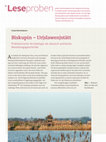
Mitropa. Jahresheft des Leibniz-Instituts für Geschichte und Kultur des östlichen Europa (GWZO), 2017
A m Südufer des Biskupiner Sees, etwa 90 Kilometer nordöstlich von Posen (Poznań) in der heutigen... more A m Südufer des Biskupiner Sees, etwa 90 Kilometer nordöstlich von Posen (Poznań) in der heutigen Woiwodschaft Kujawien-Pommern, entdeckte man 1933 auf einer Landzunge die Überreste einer prähistorischen befestigten Siedlung. Sie wird der sogenannten Lausitzer Kultur der späten Bronze-und frühen Eisenzeit zugeordnet und in die erste Hälfte des letzten vorchristlichen Jahrtausends datiert. Von 1934 an bis in die 1970er Jahre wurde diese Siedlung neben weiteren vor-und frühgeschichtlichen Fundstellen in der unmittelbaren Umgebung ausgegraben. Auf dem Ausgrabungsareal entstanden in der Folge auch Nachbauten. Abb. 1 Die Siedlung umschloss einst ein mächtiger Wall, während sich im Innenraum mehr als hundert Häuser gleicher Bauweise aneinanderreihten. Der durch das Feuchtbodenmilieu herausragende Erhaltungszustand der archäologischen Befunde und die dichte Bebauung ließen diesen Ort aus wissenschaftlicher Sicht zu einem einzigartigen Fundplatz werden. Die daran geknüpften Interpretationen und die ihm zugewiesene Bedeutung für die polnische Geschichte machten ihn zu einer nationalen Sensation. Als urslawische Burg gedeutet avancierte Biskupin seit dem ersten Spatenstich zu einem nationalen Symbol für Polen bzw. für das Polentum schlechthin. 1 Den Ausgrabungen und Re konstruktionsarbeiten wurde deshalb ein enormes öffentliches Interesse ent-geben Arbeits ergebnisse der jüngeren Forschung am GWZO wieder. Die Bei träge gehen auf Aufsätze von Mit arbeitern oder Gästen zurück, auf Vorträge, Monographien oder Publikumstexte und stellen in lockerer Folge die vertretenen Disziplinen, Epochen, Themen und Methoden vor. Leseproben Abb. 1 Biskupin.
R. Born/B. Störtkuhl (Hrsg.), Apologeten der Vernichtung oder "Kunstschützer"? Kunsthistoriker der Mittelmächte im Ersten Weltkrieg (Köln u.a. 2017) 285‐ 300, 2017
KarinReichenbach Auch wenn die hier vorgestellte Ausgrabung keine Kunstschutzmaßnahme im Sinne ei... more KarinReichenbach Auch wenn die hier vorgestellte Ausgrabung keine Kunstschutzmaßnahme im Sinne einer Inventarisations-, Dokumentations-oder Sicherstellungstätigkeit in einem umkämpften oder deutsch besetzten Gebiet des Ersten Weltkriegs darstellt, so lässt sie sich doch in einem weiter gefassten Verständnis als durch den Krieg bedingte Maßnahme zum Schutz eines Kulturgutes verstehen. Durch das Ausheben von Schützengräben an einer bekannten prähistorischen Fundstelle bei Breslau entstand eine ganz besondere Ausgrabungssituation, die von der bereits gut organisierten schlesischen Altertumskunde erfolgreich ausgenutzt wurde. 1
Z badań nad kulturą społeczeństw pradziejowych i wczesnośredniowiecznych. Księga Jubileuszowa dedykowana Profesorowi Bogusławowi Gedidze w osiemdziesiątą rocznicę urodzin przez przyjaciół, kolegów i uczniów (Wrocław 2013) 683‐695., 2013
Mitropa 10, 2018. Jahresheft des Leibniz-Instituts für Geschichte und Kultur des östlichen Europa (GWZO) https://research.uni-leipzig.de/gwzo/images/GWZO_images/Open%20Access/Mitropa/Mitropa_10.pdf, 2018
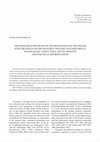
Focussing on the development of organizational infrastructures, financial constitutions as well a... more Focussing on the development of organizational infrastructures, financial constitutions as well as staffing policies of the research program on the beginnings of the Polish state and discussing them in relation to the political framework of postwar Poland, this paper aims to contribute to the understanding of the general preconditions and requirements. Presenting information from archival documents and a close reading of the steps and forms archaeological contributions to the millennial theme have taken, it tries to retrace the development of its thematic and conceptual orientation. This development is presented here as reorientation from a starting point within the realm of the Poznań intellectual centre and thus the Polish Western Thought towards a Warsovian centralization and the implementation of Marxist methodology and, officially at least, Stalinist ideology.
KEY WORDS: research on the beginnings of the Polish state, KBnPPP, postwar Poland, politics of research funding and staffing, Polish Western Thought, Stalinism, Marxist archaeology
S u s o n n e G ru n w o ld , J u lio K o th o rin o K o c h , D o re e n M ö ld e rs , U lrik e ... more S u s o n n e G ru n w o ld , J u lio K o th o rin o K o c h , D o re e n M ö ld e rs , U lrik e S o m m e r u n d S o b in e W o lfro m 2009 V e rlo g D r. R u d o lf H o b e lt G m b H , B o n n ts B N 9 2 8 -3 -7 7 4 9 -3 6 3 3 -1 D ie D e u t s c h e N o t io n o lb ib lio t h e k v e r z e ic h n e t d ie s e P u b lik o t io n in d e r D e u t s c h e n N o t io n o lb ib lio g r o f ie . D e to illie rte re b ib lio g ro fis c h e D o te n s in d im I n te rn e t ü b e r < h ttp : / / d n b . d -n b . d e > o b ru fb o r. C o p y r ig h t 2 0 0 9 b y D r . R u d o lf H o b e lt G m b H , B o n n "... damit jeder Schlesier sich besinne, daß er auf einem uralten Kulturboden lebt" Schlesische Archäologie und deutsche Ostforschung *
In: Sabine Rieckhoff/Susanne Grunwald/Karin Reichenbach (Hrsg.), Burgwallforschung im akademischen und öffentlichen Diskurs im 20. Jahrhundert. Leipziger Forsch. Ur- und Frühgesch. 5 (Leipzig 2009) 63-95.






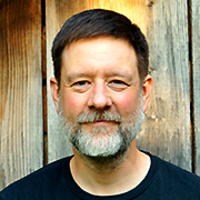


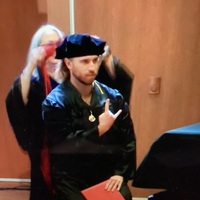
Uploads
Edited Volumes by Karin Reichenbach
The collected essays explore how these “popular Pagans” create romanticised images of pre-Christian societies, idealising their perceived naturalness, ethnic purity, and martial heroism. Drawing on ethnicist thinking, ancestral identification and nostalgia for an unadulterated past, these portrayals often disregard current scholarly discourse. Instead, they perpetuate outdated narratives, that are more in line with far-right ideals, fostering exclusionary beliefs and anti-democratic rhetoric. Based on research discussions initiated at the Leibniz Institute for the History and Culture of Eastern Europe, this volume is the first to shed light on the political role of the Pagan past in contemporary Germany, Poland and Hungary.
Papers by Karin Reichenbach
Mit der Besetzung Polens im Zweiten Weltkrieg bauten NS-Archäologen hier neue Strukturen der Vor- und Frühgeschichtsforschung auf und übernahmen wichtige Ausgrabungen. Der Beitrag schildert die Situation im sog. „Warthegau“ vor dem Hintergrund der Bedeutung der großpolnischen Archäologie und der deutsch-polnischen Auseinandersetzungen in der Vorkriegszeit. Er beschreibt die Ausgrabungen des SS-„Ahnenerbes“ in Biskupin sowie den Umgang mit polnischen Kollegen und Forschungstraditionen.
Niemcza is an excellent case for demonstrating the extent in which the results of archaeological research are influenced by political circumstances. Silesian archaeologists of the 1930s, inspired by place names and the written sources, sought the evidence of Germanic presence at Niemcza which would have endured up to the time of the Slav advent. Despite the very small number of reliable finds an argument was made for the existence at Niemcza of Germanic settlement in the 5th-6th c. This ‘extension’ of the duration of Germanic culture went hand in hand with alterations to the dating of the earliest Slav finds. The previously generally accepted view that a settlement hiatus followed the departure of the Germans and lasted until the arrival of the Slavs, was scrapped to make way for the theory on the continuity of Germanic settlement.
After 1945 one of the focal points in Polish archaeology became the study of the origins of the Poland in the 10th c. Excavations at Niemcza were resumed, to verify the earlier results. Despite the absence of sound evidence on settlement during the Migrations Period, the hypothesis that the hill at Niemcza had been settled in the 5th and 6th century was still maintained. During this period this new image of Silesia’s past was influenced by the wish to restore to the Slavs their proper place in history, which had been threatened by the findings from pre-1945 research.
KEY WORDS: research on the beginnings of the Polish state, KBnPPP, postwar Poland, politics of research funding and staffing, Polish Western Thought, Stalinism, Marxist archaeology
The collected essays explore how these “popular Pagans” create romanticised images of pre-Christian societies, idealising their perceived naturalness, ethnic purity, and martial heroism. Drawing on ethnicist thinking, ancestral identification and nostalgia for an unadulterated past, these portrayals often disregard current scholarly discourse. Instead, they perpetuate outdated narratives, that are more in line with far-right ideals, fostering exclusionary beliefs and anti-democratic rhetoric. Based on research discussions initiated at the Leibniz Institute for the History and Culture of Eastern Europe, this volume is the first to shed light on the political role of the Pagan past in contemporary Germany, Poland and Hungary.
Mit der Besetzung Polens im Zweiten Weltkrieg bauten NS-Archäologen hier neue Strukturen der Vor- und Frühgeschichtsforschung auf und übernahmen wichtige Ausgrabungen. Der Beitrag schildert die Situation im sog. „Warthegau“ vor dem Hintergrund der Bedeutung der großpolnischen Archäologie und der deutsch-polnischen Auseinandersetzungen in der Vorkriegszeit. Er beschreibt die Ausgrabungen des SS-„Ahnenerbes“ in Biskupin sowie den Umgang mit polnischen Kollegen und Forschungstraditionen.
Niemcza is an excellent case for demonstrating the extent in which the results of archaeological research are influenced by political circumstances. Silesian archaeologists of the 1930s, inspired by place names and the written sources, sought the evidence of Germanic presence at Niemcza which would have endured up to the time of the Slav advent. Despite the very small number of reliable finds an argument was made for the existence at Niemcza of Germanic settlement in the 5th-6th c. This ‘extension’ of the duration of Germanic culture went hand in hand with alterations to the dating of the earliest Slav finds. The previously generally accepted view that a settlement hiatus followed the departure of the Germans and lasted until the arrival of the Slavs, was scrapped to make way for the theory on the continuity of Germanic settlement.
After 1945 one of the focal points in Polish archaeology became the study of the origins of the Poland in the 10th c. Excavations at Niemcza were resumed, to verify the earlier results. Despite the absence of sound evidence on settlement during the Migrations Period, the hypothesis that the hill at Niemcza had been settled in the 5th and 6th century was still maintained. During this period this new image of Silesia’s past was influenced by the wish to restore to the Slavs their proper place in history, which had been threatened by the findings from pre-1945 research.
KEY WORDS: research on the beginnings of the Polish state, KBnPPP, postwar Poland, politics of research funding and staffing, Polish Western Thought, Stalinism, Marxist archaeology